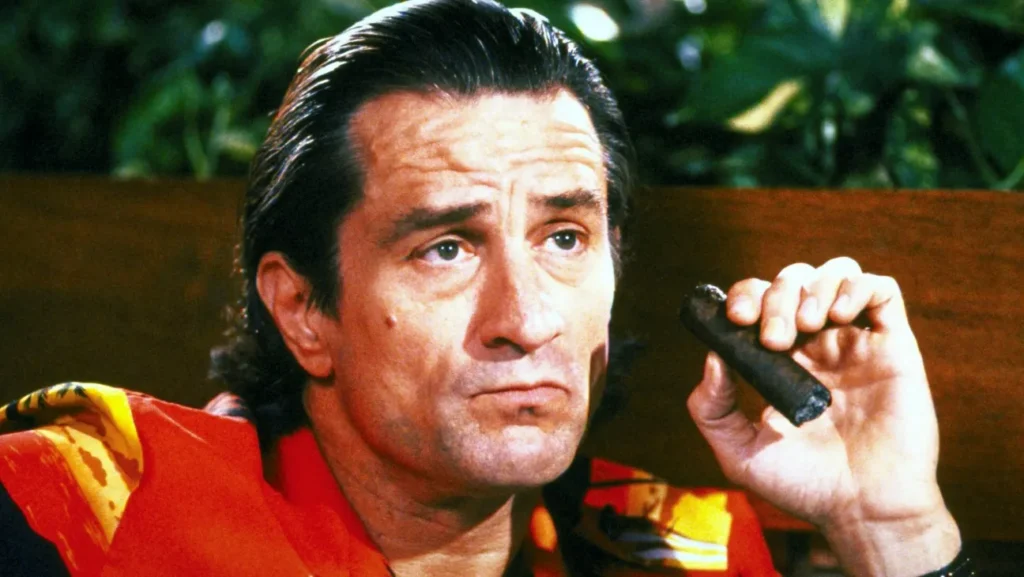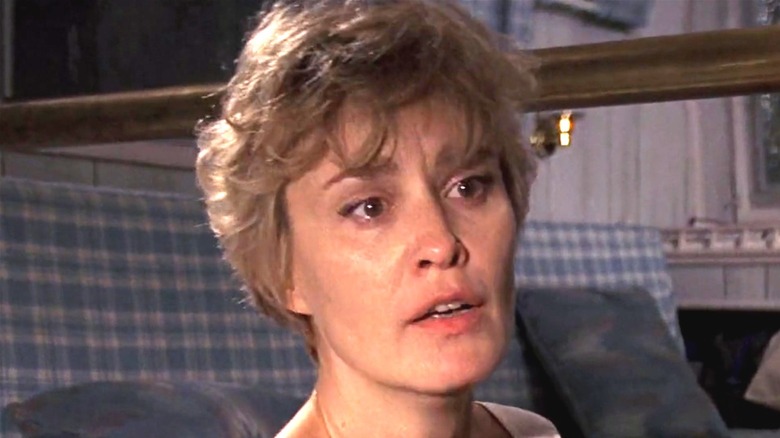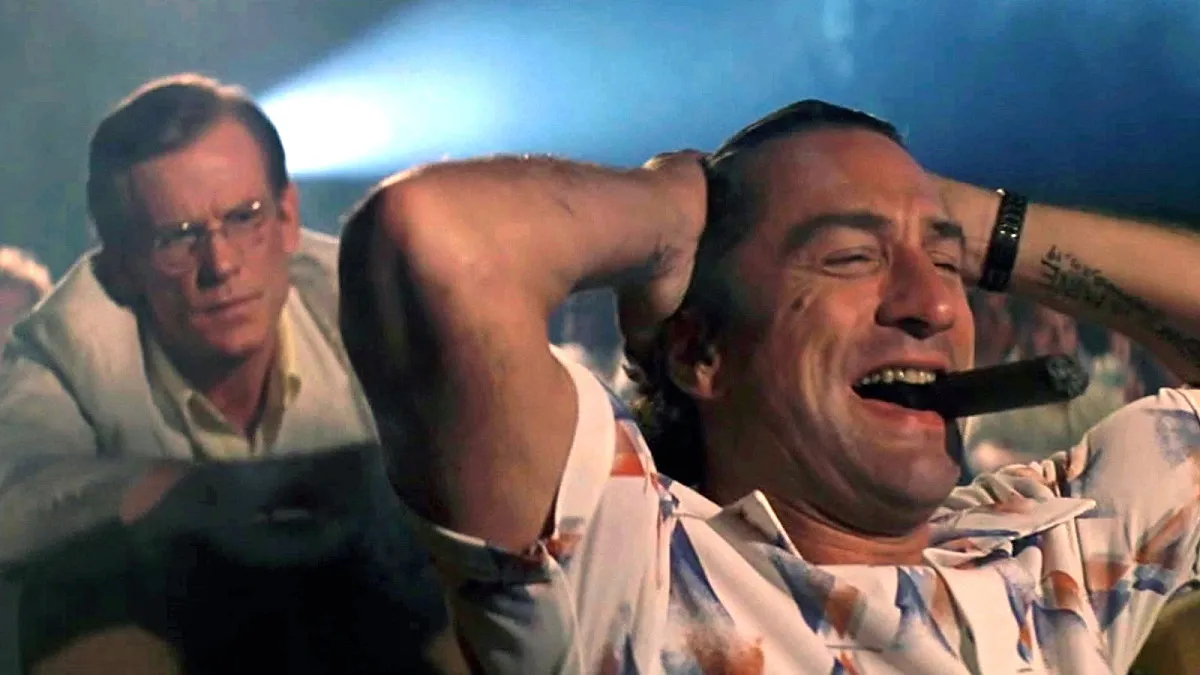There’s a fine line between a great decision and a missed opportunity. We can never know what could have been, but I will say that the exchange between Martin Scorsese and Steven Spielberg in the early ’90s is one I wouldn’t have any other way! Scorsese had Schindler’s List on his lap but was faced with a tight schedule. Spielberg had finally been given the green light for a Cape Fear remake after years of pursuing the project. Marty didn’t want to relive the boycotts and death threats from The Last Temptation of Christ by touching another religion/persecution drama.
Spielberg, on the other hand, wanted to prove himself as a serious filmmaker, rather than be stuck making crowd-pleasers. So, the swap between the two Movie Brats was made: Spielberg got to make one of the most revered films of the ’90s (maybe ever), while Scorsese delivered one of the best suspense thrillers of the ’90s (maybe ever).

Robert De Niro as Max Cady is pure unhinged menace. He never thinks he’s doing anything wrong; in fact, he feels justified in every terrible thing he does. Cady in this film is very reptilian — his dark eyes and slicked-back hair give him a hooded cobra look (in one gruesome scene, he bites someone’s cheek off). There’s nothing more bone-chilling than an articulate psychopath who can manipulate you so well that you’ve been destroyed without realizing it. In true method fashion, De Niro spent $5,000 on a dentist to grind away portions of his teeth to make his mouth appear uneven and disjointed — and he had to spend $25,000 more to get them fixed!

You almost forget that Juliette Lewis was just a kid in this movie. She always brings an intense edge to her roles, whether playing naive or villainous characters. The auditorium scene with her character Danielle is a standout. It’s hard to believe that Cady sticking his thumb in Danielle’s mouth was improvised; it’s a gross sexual awakening for her, a perverse coming-of-age moment. The fact that he has it in for her parents feeds into her preexisting teenage rebellion. Danielle is afraid of her parents finding out, but she’s also excited by this new experience. This is the essence of the best Scorsese films: he puts you in a headspace of sleaze and amorality like no other filmmaker!

Jessica Lange is a wonderful presence, and I wish I had appreciated her more throughout her career. Her character is integral yet minor to the story, so every scene she’s in feels essential. Apparently, Lange convinced Scorsese to insert scenes between her and Cady since the two characters don’t meet until the climax. We get snippets of what has caused the family’s unhappiness, and it’s mainly through Lange’s performance!
I still feel Nick Nolte was miscast, though. The role needed someone like Gregory Peck, Jimmy Stewart, or Henry Fonda — actors who represented the strong, silent types. Harrison Ford or even Michael Douglas would’ve been perfect. But that doesn’t mean Nolte’s helplessness isn’t palpable. The narrative is so well-constructed that Cady doesn’t need to do much harm — the law enforcement officers and private investigators all treat Nolte’s character like he’s the crazy one! It’s a sly commentary on a broken system that can only provide a safety net after the harm is done.
Bernard Herrmann’s score is a masterclass in fear and intrigue. It’s bombastic and hits you right from the start. The music feels neither moral nor immoral, aligned with no right or wrong, good or evil — just the indifference of power and the awe it inspires. It’s like watching Cthulhu emerge from the sea, as you realize you’re both the luckiest and unluckiest person for witnessing it.

Now, the inevitable question arises whenever Scorsese makes a remake: was it better than the original? For me, the original had a family many could sympathize with — a District Attorney faithful to his wife and with a nice teen daughter. The remake, however, centers on a criminal defense attorney who cheats on his wife, with a daughter on the brink of being seduced by evil. The original is a classic but was hindered by the 1960s’ strict codes.
The family in the original is idealistic and wholesome, bonding together to overcome an external threat. Scorsese’s version is more fractured and on the verge of breaking up — the cracks in the family are what allow Cady to infiltrate. The more dysfunctional dynamic works better for the remake, making it feel less black-and-white. Hell, they even got Gregory Peck — the symbol of all that’s good in America — to represent De Niro’s Cady in court! This remake is twisted, right down to the casting.
The climax is a bit over-the-top, but it fits as a “Blank from Hell” ’90s thriller. The film is bookended by Danielle’s monologue about Cape Fear. This has always been her story, observing the psychological damage inflicted on her family. Even as Cady is defeated, her PTSD-ridden eyes tell us the family will never be the same. They will forever live under a cape of fear — a stark reminder that traumatic experiences don’t always bring people together to heal.
The threat of violation and SA lingers over the entire film, lending it an ugliness that Scorsese wields like no other. Cape Fear is a very nasty film that proves Marty can backstroke effortlessly in genre waters. It remains irrefutable proof that the maestro can flourish within the mainstream studio system without losing his exhilarating cinematic vocabulary.

Chaitanya Tuteja is someone who enjoys sharing his thoughts on books, movies, and shows. Based in India, he appreciates exploring different stories and offering honest reflections. When not reflecting on his favorite media, Chaitanya enjoys discovering new ideas and embracing life’s simple moments.


Our platform makes available many types of pharmaceuticals for easy access.
Customers are able to easily get health products with just a few clicks.
Our range includes popular solutions and more specific prescriptions.
The full range is provided by licensed suppliers.
https://www.provenexpert.com/en-us/propecia-online/
We ensure user protection, with encrypted transactions and on-time dispatch.
Whether you’re managing a chronic condition, you’ll find what you need here.
Explore our selection today and experience reliable support.